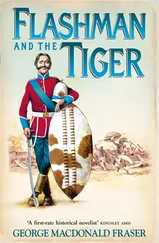And then—before even we got a chance to really enjoy ourselves (except for making the baby boom happen)—it all went to pot. The Red Army occupied the majority of Eastern Europe, and made it obvious that they had no intention of leaving. Relieved of life under the previous despot, the Poles, Romanians, Czechs, Hungarians, and Bulgarians now had a new one.
When did the Cold War begin? If you asked twenty diplomatic historians, you’d get twenty different answers. (The only one that is correct: 1917. And yes, I will die on this hill.) For some, 1946 would be a natural place to start. The Soviets indicated that they had no desire to retain the close(ish) relationship forged with their allies during the war. They refused to take part in the creation of the World Bank and International Monetary Fund. Then, in 1947—another popular answer among historians—the world watched as Greece and Turkey fell into what can only be described as civil wars inspired by leftist insurgencies. This, in turn, inspired President Truman to announce his doctrine, committing American power to the defense of nations everywhere fighting against communist aggression, and putting the United States in a permanent state of proxy and covert war on a global scale.
Then you have 1948, another possible starting point. Your high school or college history books probably listed two events from 1948, the Marshall Plan and the Berlin Airlift, as major high points for the United States and the West in the early Cold War. These were wins, right? We kicked some commie ass and took names!
Sure, why not? If that makes you feel better, roll with it.
The reality, however, is something quite different. Your history teachers glossed over the fact that the Berlin Airlift was needed because the Soviets had full control of the ground routes into and out of West Berlin, which was completely surrounded by the Red Army. They were trying to starve out the Allies, and the airlift was a desperate attempt to keep us in the game. Yes, we pulled it off. But this short-term tactical victory exposed a significant strategic weakness, one that the Soviets would continue to exploit throughout the Cold War.
Then there is the Marshall Plan. Half of the buildings in Western Europe might as well be stamped “Made in America” for all of the billions we poured in for reconstruction following the war. But this wasn’t done from the goodness of our hearts. For one, it provided markets for American goods, which had by then shifted from tanks back to Buicks. But more important, it kept Western Europe from choosing to become communist (or at least very left-leaning). In places like France and Italy, where communists led much of the resistance fighting against the Nazis, leftist candidates were using the devastated economies of their countries to make a political push for legitimacy. There was a chance—and a fairly good one—that if nothing was done to help the European economies, then the people of France and Italy (and maybe even others to follow) would elect communists to their highest political offices.
The United States was terrified of this possibility. You don’t need the Red Army to conquer Europe if you can do it through the ballot box. So we bought them off. Another tactical victory. Another sign of strategic problems to come.
As bad as 1948 might have been, it’s got nothing on 1949, when the wheels really fell off. That year saw the most populous nation in the world go communist, as Chairman Mao finally outslugged the Nationalists and took power in China. Then in August, America’s short-lived monopoly on atomic weapons abruptly ended (years before American intelligence had predicted it would) when the Soviets tested Joe-1, a near-identical copy of the Fat Man bomb dropped on Nagasaki.
In less than four years, a former ally against the Nazis had turned into a true existential threat to the security of Western Europe, and even to that of the United States. No matter what date you start with, it’s clear by 1948 that things were well under way.
Yet to this point, the war remained cold—at least for the Americans (not so much for the Chinese). But that would change in June 1950, when North Korean forces pushed across the 38th parallel.
All of a sudden, the United States was in a shooting war. American servicemen were dying by the thousands—and most in the highest levels of the U.S. government assumed the Soviets were behind the North Korean attack.
The Soviets were brazenly thumbing their noses at the global postwar order. Could an invasion of Western Europe be next? Could an invasion of the United States be next? Some people—and people in high places—thought so. And they were scrambling to get ready.
• • •
His namewas Morris Wilson Moore, but his friends called him Slim. He was an electrician by trade, but since moving to Alaska in 1926 he had dabbled in numerous avocations: big-game guide, electrical lineman, dog musher, trapper, working with packhorses, boating, and the installation of special antennae. He had a “very good” knowledge of the entire territory north of Cordova, Alaska (with the exception of the Seward Peninsula), and personally owned a Hudson Bay canoe, a twenty-six-foot riverboat, and a cabin in the woods, and had knowledge of numerous other cabins he could use in a pinch.
Antone Adolph Zimmerman had spent fifty years in Alaska. He worked at Ladd Air Force Base as a warehouseman, but he’d previously tried his hand at mining and prospecting, carpentry and blacksmithing, and operating riverboats. He was an accomplished woodsman, and had significant experience with dog teams. He had “excellent” knowledge of the Fairbanks area, and “good” knowledge of Seward Peninsula, Kagukuk, Chandaliar Area, and Circle District. He owned at least four cabins, one on Sourdough Creek, one on Eagle Creek, one on Independence Creek, and one on Ketchum Creek.
Jack Warren was a resident of the Big Delta Territory, and had spent thirty-seven years in Alaska. He was an instructor in Arctic survival methods, and his résumé included previous experience as a big-game guide, a pilot, a dog musher, and a radio operator. Jack also held a master license for boats up to sixty-five feet long. He had “excellent” knowledge of the Big Delta Territory, Nome, Teller, and Fairbanks, and apparently “good” knowledge of everywhere else. He owned boats of “various kinds,” and a single cabin, although he had access to numerous others.
Peter Snow spent his time as a skipper on a river boat near his hometown of McGrath. As you might expect of someone with the name “Peter Snow,” who had spent his entire life in Alaska, the man had skills. He was proficient in trapping and fishing, was familiar with mechanical machinery, could transmit by radio, and could drive a dog team. Along the way, Peter Snow had also acquired a fair knowledge of the Eskimo language. He had “excellent” knowledge of the area from McGrath to the Alaska Range, and “good” knowledge of the Rainey Pass. Mr. Snow owned two cabins in McGrath, and even had his very own dog team.
And finally there’s Luther William “Tex” Noey, who was truly a jack of all trades. Even though Tex had only been a little over two decades in Alaska, he had spent time as a big-game guide, an insurance agent, and an apartment manager. He was an avid hunter and fisherman, a skilled mechanic, could operate a radio, had experience with dog teams, and even habla’ed some decent español. Tex had “very good” knowledge of the Anchorage, Fairbanks, Lake Clark, Kotzebue, Wrangell, and Manley Hot Springs areas, and “good” knowledge of the coast of Alaska from Kotzebue north to Point Barrow. He also owned several small boats that would be usable in inland waters and a cabin with a radio transmitter (although the condition of the radio was in question). He had knowledge of numerous other cabins as well.
Читать дальше











